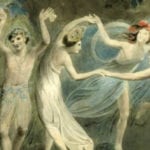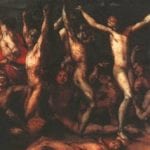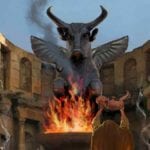 History
History  History
History  Technology
Technology Top 10 Everyday Tech Buzzwords That Hide a Darker Past
 Humans
Humans 10 Everyday Human Behaviors That Are Actually Survival Instincts
 Animals
Animals 10 Animals That Humiliated and Harmed Historical Leaders
 History
History 10 Most Influential Protests in Modern History
 Creepy
Creepy 10 More Representations of Death from Myth, Legend, and Folktale
 Technology
Technology 10 Scientific Breakthroughs of 2025 That’ll Change Everything
 Our World
Our World 10 Ways Icelandic Culture Makes Other Countries Look Boring
 Misconceptions
Misconceptions 10 Common Misconceptions About the Victorian Era
 Mysteries
Mysteries 10 Strange Unexplained Mysteries of 2025
 History
History 10 Things You Didn’t Know About the American National Anthem
 Technology
Technology Top 10 Everyday Tech Buzzwords That Hide a Darker Past
 Humans
Humans 10 Everyday Human Behaviors That Are Actually Survival Instincts
Who's Behind Listverse?

Jamie Frater
Head Editor
Jamie founded Listverse due to an insatiable desire to share fascinating, obscure, and bizarre facts. He has been a guest speaker on numerous national radio and television stations and is a five time published author.
More About Us Animals
Animals 10 Animals That Humiliated and Harmed Historical Leaders
 History
History 10 Most Influential Protests in Modern History
 Creepy
Creepy 10 More Representations of Death from Myth, Legend, and Folktale
 Technology
Technology 10 Scientific Breakthroughs of 2025 That’ll Change Everything
 Our World
Our World 10 Ways Icelandic Culture Makes Other Countries Look Boring
 Misconceptions
Misconceptions 10 Common Misconceptions About the Victorian Era
 Mysteries
Mysteries 10 Strange Unexplained Mysteries of 2025
10 Brutal Witch Trials Focused On Children
Today, we assume that children need to reach a certain age before they can understand the consequences of their actions. But that wasn’t always the case.
For hundreds of years, children were often the focus of witch hunts and trials—both as victims and as witches. Easily swayed, impressionable, and young, they were believed to be the perfect targets for the Devil.
10 The Navarrese Witch Hunt
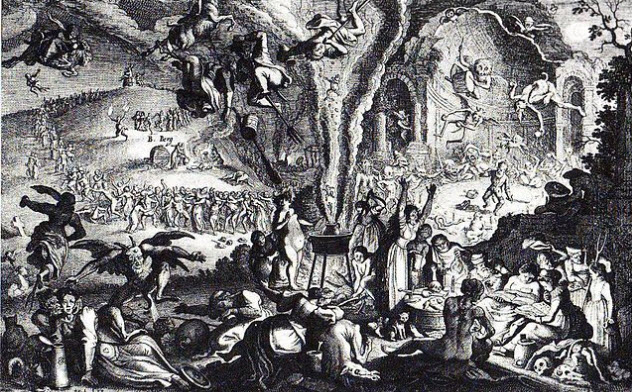
In 1525, the Navarrese witch hunt marked the first official appearance of a professional witch-hunter in the historical record. When this unnamed figure was dispatched into the mountains to keep people on the right spiritual path, he embarked on quite the killing spree. Of course, these actions played out against the backdrop of the Spanish Inquisition.
When the Navarrese commissioner headed into the hills, he was accompanied by two sisters, ages nine and 11, who were known witches (aka brujas). They were his weapons. Once they arrived at a village, they were installed in two separate houses.
The girls would examine each villager for signs that the person was one of their evil brethren. The villagers agreed to these exams to prove that they weren’t witches. As the two child witches cleared or condemned each villager, the Navarrese official kept moving across the countryside, making arrests and overseeing executions.
By the time the girls were done, they had seen around 400 people. Ten women and two men were named as witches. The examinations of two others were inconclusive. In the meantime, the massive hunt had come to the attention of the Supreme Council of the Spanish Inquisition. They questioned who had jurisdiction over the accused.
Not surprisingly, the Spanish Inquisition won, and 30 of Navarre’s witches were put on trial. Precedents were set, dictating that the practice of the witches’ sabbat was real (as opposed to just in the imaginations of the accused). Guidelines were also put into place for the future prosecution and punishment of the Navarre witches.
It was decided that witches rarely deserved death unless evil spells and spirits were clearly involved. Efforts were focused more on the witches’ reeducation. Unfortunately, that merciful treatment only lasted until around 1610. The reign of inquisitor Alonso de Salazar y Frias, “the witches’ advocate,” had also spared the witches harsher treatment.
9 Little Murgin
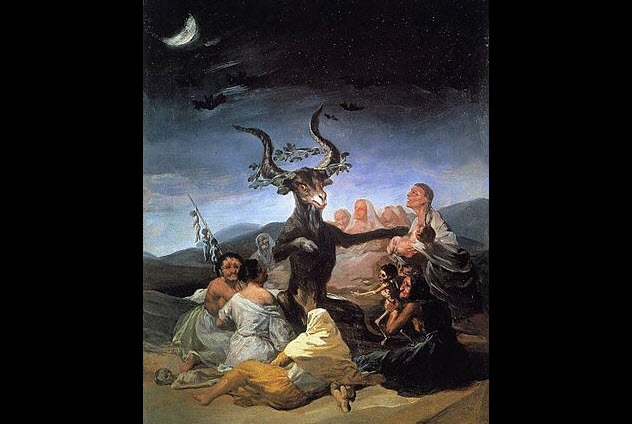
In 1862, French historian Jules Michelet published his work La Sorciere (“The Sorceress”). It was one of the first books to look at the personal stories of everyone from peasant healers to nuns who were condemned as witches. In part, Michelet presented the witches as rebels against an oppressive society, pioneers in medicine, and puppets manipulated by men (especially in the clergy).
In his chapter on Basque witches, he told of a group of women who were born witches, told fanciful legends from their first days, and taught to swim like fish. They were also privy to secrets whispered by the winds. Part of their danger lay in their beauty and charm, which hid dark motives and a power that allowed them to summon the Devil at will.
The gatherings of the French Basque witches grew in popularity, like a trendy place to be seen. When Seigneur de Saint-Pe held one of these gatherings, he became convinced that one of the witches was continuing to suck his blood. So he appealed to the Basque government to cleanse the region of witches. Around 60–80 witches were put on trial, including a 17-year-old beggar named Margarita (aka Little Murgin).
Michelet wrote that Little Murgin told the judges of how she and Lisalda, her companion, sacrificed children to the Devil. Inexplicably, Little Murgin was ultimately tasked with examining others for the mark of the Devil and signs that they were witches.
One of the telltale signs that the Devil had put a mark on someone was the ability to painlessly drive needles into that spot on a person’s body. Little Murgin was put in charge of piercing the youngest suspects with needles. Although Michelet doesn’t tell much else about her fate, he does suggest that many people met a cruel, painful death at her hands.
8 The Paisley Witches
In 1696, 11-year-old Christian Shaw caught Catherine Campbell, one of her family’s maids, taking milk without permission. When Shaw told her mother about it, Campbell reportedly said to the little girl, “The Devil hurl your soul through Hell.”
Soon after, Shaw suffered from all the typical signs that a witch was tormenting her. Marks appeared on her body, she fell into fits and spasms, and she claimed that she was arguing scripture with the Devil. She began to spit out objects that witches had supposedly put inside her through magic. When she spit up a hot coal in front of a local doctor, her father persuaded law enforcement to arrest the 21 people whom she had accused.
Shaw claimed that she had seen some of these people in the company of a black demon. Twelve-year-old Thomas Lindsay was arrested when he claimed that his father was the Devil. Supposedly, young Lindsay had seen his father fly. The trials began in March 1697 after Shaw was brought near some of the accused and fell into fits. By that time, there had already been some questionable deaths, including a local minister and some otherwise healthy children.
Fourteen of the accused were cleared and released. But three men and four women—including Catherine Campbell—were found guilty. They were hanged and then burned at Paisley’s Gallow Green. After the executions, Shaw reported that she had been completely cured.
After the ordeal, Shaw was initially relegated to spinsterhood. At 34, she finally married, but it ended quickly with the early death of her husband. So she turned to spinning to support herself. At the time, the Netherlands was known for its fine product. Shaw convinced a merchant to smuggle some Dutch equipment into Scotland.
She set up her own Bargarran Thread Company, built herself a sizable fortune, remarried, and lived out the rest of her days in surprising happiness. Paisley’s fortunes were less favorable, though. As the witches were hanged, one cursed the town and all of its descendants. The city began to decline in the 1960s when the mass grave of the witches was disturbed and the horseshoe sealing the evil inside was removed.
7 The Accused Children Of The Salem Witch Trials
Although most of us know that the Salem witch trials were started by children, it is less well-known that many children under age 12 were also accused of practicing witchcraft.
At least eight children were accused, all of whom had mothers among the accused. The evidence against the children was of the spectral sort, and all eight confessed that the accusations were true. Some said that their mothers had turned them into witches, but Johanna Tyler and Sarah Carrier went into greater detail as to the conversations they’d had with devils.
Sarah and Thomas Carrier were seven and 10 years old, respectively, when they went on trial with their mother, Martha. Their mother was hanged within a week. But Sarah went on to point the finger at her aunt and a 10-year-old cousin, Margaret, whose parents were also accused.
Dorcas Good was around five years old when she was accused of witchcraft. Records of the accusations against her predate the others by several months. Dorcas was supposedly behind the spectral torment of her peers. She testified that her mother controlled three birds and used them to torment people whom she didn’t like. Supposedly, Dorcas’s mother had also given her daughter a snake as a familiar. Her mother was among the first to be hanged in spite of her protests that she was innocent.
Puritan belief suggested that children were among the most likely to become servants of the Devil. They were easy to influence and take advantage of. In some cases, their environment made these children susceptible to thinking that they were evil sinners, which made it likely that their confessions were heartfelt.
6 Juliusspital

In the 17th century, Germany was a hotbed of witch hunts and persecutions. Most of the contemporary records and firsthand accounts have been lost, but some suggest that hundreds of children were accused, tortured, and sometimes executed. In 1627, Juliusspital, Wurzburg’s city hospital, was turned into a holding center for those accused of witchcraft.
Unfortunately, there was also a school and an orphanage attached to the repurposed hospital. Predictably, people began to suspect that some of its residents were being corrupted by the witches.
By January 1628, 10 children between eight and 13 years old fell under suspicion of witchcraft. Each agreed that the charges were right. They told stories of dances, of being baptized and promised to the Devil, and of how their parents had been behind their conversions. Two of the girls confessed that they’d had intercourse with the Devil and were immediately executed.
As there was still hope that the other children could be reformed, they were handed over to the district’s witch-hunters. In October 1628, 13-year-old Hans Philipp Schuh went on trial. Although he initially proclaimed his innocence, he confessed to being a witch after receiving 123 lashes.
Then Hans claimed that a classmate had introduced him to witchcraft. He offered some X-rated proof by describing all of the sexual encounters that he’d had with his peers—specifically with the girls whom he had seduced into witchcraft as well. He was executed that November.
5 The Witch Children Of Finnmark
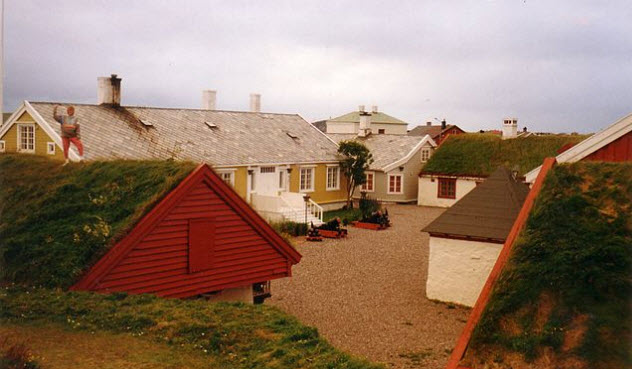
Maren Olsdatter was 12 years old when she confessed that her father—who had already been executed for being a witch—had taught her the craft. At first, she said that she had tried to resist the Devil, who had appeared to her first as a black dog and then as a man with clawed feet and hands and horns growing from his knees.
After she pledged herself to him, he took her on a tour of Hell. According to Maren, she had seen a lake of fire where countless people were lying with their faces on fire. To show her just how hot it was, the Devil dipped a piece of ham into the lake. The ham was cooked when he pulled it out.
She recognized people who had taken on the appearance of various birds. She was a crow herself, returning to her human form only when she returned to the mortal plane. Her details were so convincing and so shocking that she was reprimanded by another woman who claimed to have visited Hell but hadn’t been lucky enough to see the Devil’s ham-cooking party trick.
Other children were also accused of witchcraft. Although Ingeborg Iversdatter was supposedly present at parties thrown by the Devil, eight-year-old Karen Iversdatter confessed to learning witchcraft from her parents (who had already been executed as witches). Karen Nilsdatter, Kirsten Sorensdatter, and Sigri Pedersdatter also confessed in the shadows of their parents.
Maren recounted the singing, dancing, and drinking that went on in their witches’ coven. She told of how the Devil had brought her cat’s blood and fur so that she could transform herself into a cat. Supposedly, she was also taught to milk a cow in a way that produced blood as well as milk. The confessions of the other children also included a black dog as well as claims of drinking milk and renouncing God.
When it came to deciding the fate of children who clearly had a relationship with the Devil, it was argued that they were too young to know better and to have received all the sacraments and protections of the church. The girls were acquitted.
4 Hans Merckler And The Witches’ School
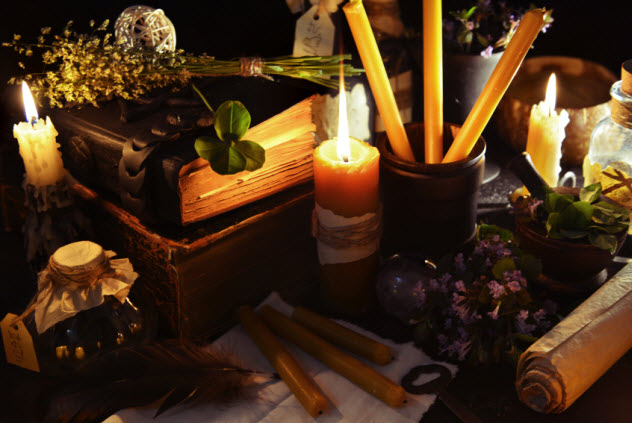
In 1628, 12-year-old Hans Merckler was one of the children accused of witchcraft in Wurzburg, Germany. According to witness testimony, though, Merckler wasn’t just tempted into doing the Devil’s bidding by his parents. He wanted to start his own witches’ school.
It all started with a game played by Merckler with two boys, ages six and eight. A milk bucket and chair were placed on top of a dung heap. The boys raced to the top and repeated a diabolical catechism. But an innocent game of king of the hill took a dark turn when it was claimed that the Devil was in the bucket. Each boy took turns sitting in the chair at the top of the hill, denouncing God and all his saints and swearing allegiance to the Devil.
When other parents found out what was supposedly going on, Merckler was accused of trying to start a witches’ school to entice his peers into worshiping the Devil. Merckler appealed his case and asked to attend a Jesuit school. After six months of presumably good behavior, he was transferred to the care of a guardian who promised to keep him out of trouble.
3 Maria Bertoletti Toldini
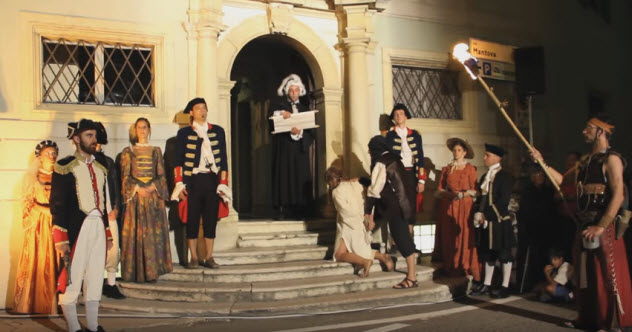
For Maria Bertoletti Toldini, a 60-year-old widow who was beheaded and burned as a witch in a small town in the Italian Alps, justice has been slow in coming. But she might get it after all. Her case was reopened in October 2015 to make amends and acknowledge a travesty of justice that happened 300 years earlier.
When Toldini was arrested in 1715 on charges of witchcraft, the evidence against her was staggering. A treasure trove of documents had been submitted to support the charges, and she was accused of everything from blasphemy to cursing local farmlands.
The prosecution claimed that she had been 13 years old when her aunt introduced her to the ways of the witch. After denouncing her Christian faith and being rebaptized by the Devil, Toldini had promised to serve him up a child each month. The claims about the children had earned her the hatred of the people and a death sentence.
There was a bizarre list about children whom she had supposedly killed over her years. She was blamed for the death of a baby in 1714 and a girl suffering from dropsy. Toldini had supposedly killed them using a special ointment made from holy water, sacramental ashes, and oil and wax from blessed candles.
Another child had died after developing cancerous tumors, supposedly after eating butter that Toldini had mixed with her noxious poison. But the most bizarre fate was suffered by five-year-old Pietro, whom Toldini has thrown into a vat of boiling cheese after breaking into his parents’ home.
Toldini was tried, found guilty, and then beheaded and burned in Brentonico’s Palu Park.
Historians have taken another look at the documents from her trial. They suspect that the unnamed person who first brought the charges against Toldini was someone in her own family who wanted an inheritance. One of the last people to be charged with witchcraft in her area, Toldini declined to do the one thing that most others did—name other witches.
2 Helena Curtens
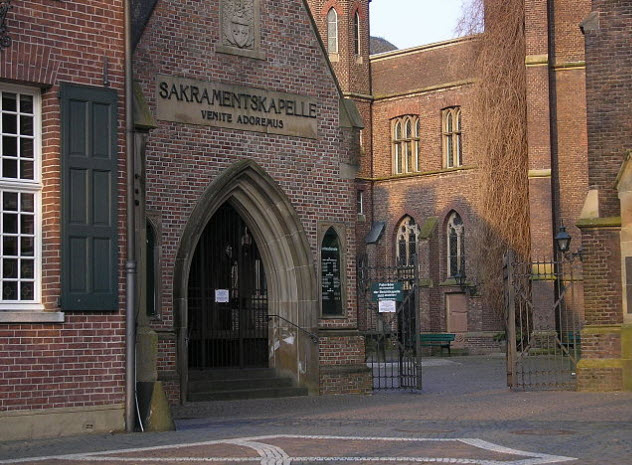
Helena Curtens was among the last people to be executed for witchcraft in Germany. A sickly child, she was 14 when her father took her on a pilgrimage to a sacred site at Kevelaer.
According to the story, a merchant was traveling through the city in 1641 when he heard a voice commanding him to build a chapel there. At the same time, his wife received a vision of a portrait of the Virgin and Child. They acquired the picture from her vision and built a chapel around it. Even today, hundreds of thousands of people make a pilgrimage there every year to visit the “Comforter of the Afflicted.”
Although many of the pilgrims might be comforted, Curtens got something else—and she wouldn’t stop talking about it. According to her, she was surrounded by ghosts throughout her pilgrimage. It wasn’t long before the wrong sorts of people heard her stories.
When Curtens was arrested, she freely claimed that the Devil had told her to perform a series of sacrifices for the ghosts. Each time she did, she was given a towel to help alleviate her chronic illnesses. She wasn’t doing it alone, though. Her neighbor Agnes Olmans was also accused of being in cahoots with the Devil.
While Olmans denied the whole thing, Curtens talked about her sexual liaisons with the Devil, produced her magical towels, and failed the needle test. The case dragged on, and Curtens was 16 years old by the time that she and Olmans were burned at the stake on August 19, 1738.
1 Loyse Maillat
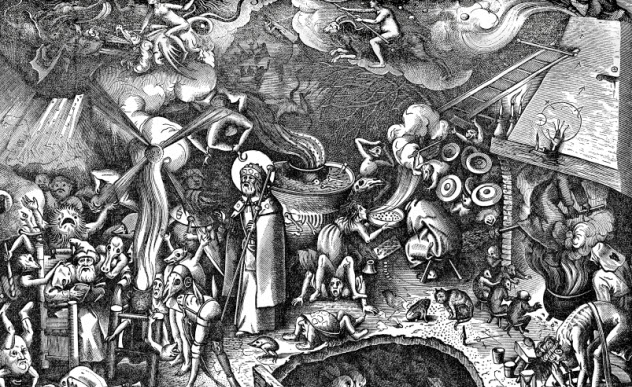
Henri Boguet was one of history’s most influential witch-hunters. In 1590, he published Discours des Sorciers (“A Discourse on Witches”). He described everything that an inexperienced judge should know to successfully prosecute witches. In 1598, Boguet oversaw the case of a young girl that allowed him to kick off one of the largest witch hunts in France.
Loyse Maillat was eight years old when she was suddenly reduced to walking on all fours. When her parents took her for an exorcism, Loyse said that five demons—Cat, Dog, Wolf, Jolly, and Griffon—possessed her. It was only after hours of prayer that the little girl coughed up her demons.
She and her parents testified that four of the demons were red and one was black. When she finally coughed them up, two were already dead. The others danced around a bit before leaving, and they knew exactly who had caused the possession: Francoise Secretain.
Secretain had been in the Maillats’ home the day before Loyse’s sudden illness and possession. Loyse claimed that the woman gave her a piece of bread and instructed her to eat it. At first, Secretain proclaimed her innocence. But after three days of torture, she confessed to causing hail, dancing at sabbats, murdering a woman by feeding her bread sprinkled with Devil’s dust, killing livestock, and sending demons to possess little Loyse.
For Boguet, it was a major win. Secretain was proof that witches had the ability to cause others to be possessed by devils. This opened the door to discovering all kinds of witches who had managed to fly under the radar until then. A mass witch hunt was undertaken, but Secretain didn’t live to see it. She was burned at the stake.
